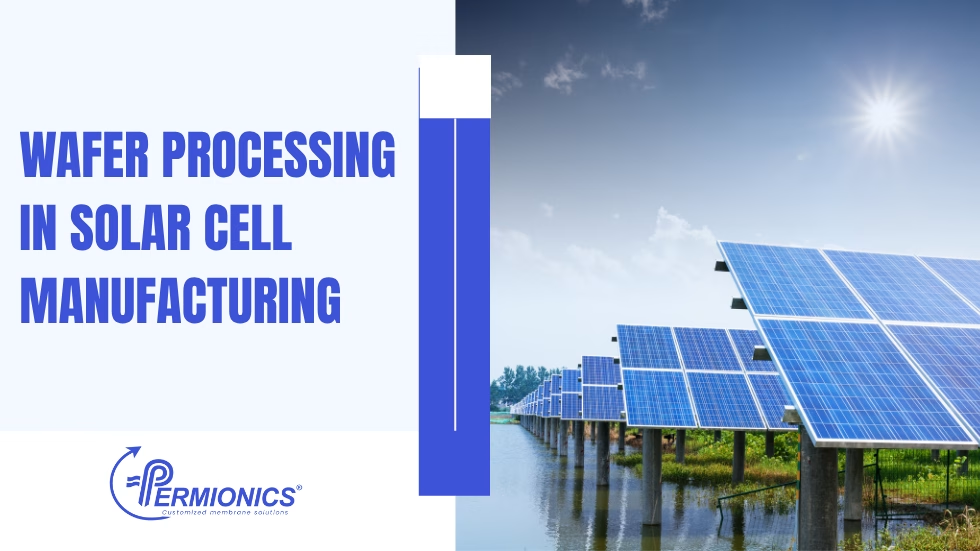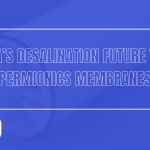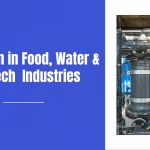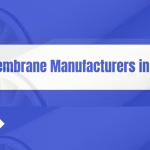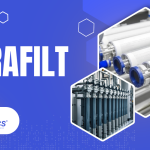Introduction
The solar industry is built on precision. Every solar cell is expected to deliver maximum efficiency and durability. But hidden behind the advanced technologies lies something surprisingly simple—water. Not ordinary water, but high-purity water.
This type of water plays a central role in wafer processing in solar cell manufacturing. From cleaning and etching to final finishing, ultrapure water ensures wafers remain defect-free. Without it, the risk of contamination and performance loss becomes significant.
In this blog, we’ll dive deep into why Ultrapure water water is critical, how it supports wafer processing, and the role of advanced systems like ZLD in making the entire process cleaner and more sustainable.
Wafer Processing in Solar Cell Manufacturing
Wafer processing in solar cell manufacturing is one of the most sensitive stages of production. It starts with silicon wafers that must be perfectly clean before they can be turned into high-efficiency solar cells.
Any particle, metal ion, or organic impurity can reduce the wafer’s performance. Even microscopic contamination can cause defects that weaken the final solar module. That’s why manufacturers rely heavily on ultrapure water systems at every stage of wafer fabrication.
The challenge is simple: wafers are extremely delicate. They need to be handled with water that leaves no residue, no contaminants, and no risk of chemical reactions. This is where ultrapure water (UPW) systems become indispensable.
Key Challenges in Solar Cell Manufacturing
Solar fabs operate at enormous scales, and with that comes significant water-related challenges:
- High consumption of ultrapure water in wafer manufacturing – Wafer cleaning, CMP, and etching demand vast amounts of UPW.
- Chemical-heavy effluent streams – CMP slurries and etching solutions create wastewater that’s difficult to treat.
- Need for Zero Liquid Discharge (ZLD) compliance – Stricter regulations require fabs to eliminate liquid waste.
- High energy and operational costs – Traditional water treatment processes are energy-intensive and costly.
- Sustainability and ESG targets – Solar fabs must balance purity and sustainability to align with global carbon goals.
Addressing these challenges requires a smarter water management strategy that goes beyond conventional treatment.
Does Wafer Processing Require High-Purity Water?
Yes, and the reasons are clear. Wafer surfaces are exposed to multiple cleaning, etching, and rinsing steps. If the water isn’t ultrapure, it introduces impurities that can alter the wafer’s properties.
For example:
Particles can scratch the wafer surface.
Ions can change electrical conductivity.
Microbes can release organic compounds that damage the wafer structure.
So, does wafer processing require ultrapure water? Absolutely. It isn’t a luxury—it’s a necessity. Without it, manufacturers risk producing solar cells with lower efficiency, shorter lifespan, and reduced reliability.
This is why companies like Permionics have developed advanced membrane systems that ensure only the purest water touches the wafer surface.
Enabling Clean Energy at Every Drop
Permionics addresses these challenges with membrane-integrated solutions that balance purity, efficiency, and sustainability. The approach isn’t one-size-fits-all — it’s tailored to each fab’s process.
1. Requirements Analysis
A thorough study maps ultrapure water usage, recovery potential, and effluent load.
2. Pilot Trials
Custom pilot validations test performance against solar-grade water standards.
3. System Design
Advanced pre-treatment, high-purity polishing, and final polishing steps are integrated into a compact, energy-efficient system.
The result is reliable, ultrapure water production and recycling systems that cut waste while ensuring the highest purity levels.
Do ZLD Systems Benefit Semiconductor Plants?
Yes — ZLD systems are master in it. Semiconductor and solar fabs generate highly contaminated effluent streams from etching and CMP. Conventional treatment can’t handle these loads sustainably.
ZLD systems step in to:
- Recycle wastewater streams with high chemical loads.
- Eliminate liquid discharge entirely.
- Enable reuse loops for polishing, slurry dilution, and even cooling towers.
- Reduce dependency on freshwater sources.
So, do ZLD systems benefit semiconductor plants? The answer is a resounding yes. They cut costs, improve sustainability, and ensure compliance with global environmental standards.
Applications & Installations
The versatility of membrane-integrated systems shows up in real-world solar fabs:
- Wafer cleaning and surface conditioning
- CMP and etching processes
- UPW generation for solar manufacturing lines
- ZLD systems to recycle high-chemical effluents
- Reuse loops for polishing, slurry dilution, and cooling towers
- Total Water Management (TWM) across facility operations
These applications prove that clean water isn’t just important — it’s central to every stage of solar cell production.
Clean Water Important for Solar Cell Production
Why is clean water important for solar cell production? Because water quality defines the end product’s reliability.
Clean water ensures:
- Precision cleaning and etching of wafers.
- Higher conversion efficiency of cells.
- Reduced rejection rates.
- Long-lasting solar modules.
This directly connects the concept of clean energy to clean manufacturing. Without high-purity water, solar energy wouldn’t truly be sustainable.
Results & Impact
Advanced membrane-based solutions deliver measurable impact for solar fabs:
- 95–99% ultrapure water recovery
- Reduced dependence on freshwater sources
- Chemical-free wastewater treatment with ZLD
- Energy-efficient operations and compact footprint
- Enhanced ESG scores and global compliance
These results show how wafer processing in solar cell manufacturing can evolve from being resource-intensive to being clean, efficient, and sustainable.
Technology Behind Ultrapure Water
Producing Ultrapure water for wafer processing isn’t simple. It requires advanced membrane technology, ion exchange, and filtration systems.
Permionics, for example, uses specialized membrane systems that eliminate ions, particles, and organic impurities. The result is water that meets the most stringent standards of the solar and semiconductor industries.
The integration of ZLD technologies ensures that the water cycle is closed, and nothing goes to waste. This makes the process not only technically reliable but also environmentally responsible.
The Hidden Cost of Impure Water
To understand the importance of high-purity water, let’s flip the question: what happens when it’s missing?
- Defects in wafers lead to lower conversion efficiency.
- Increased waste as more wafers are rejected.
- Higher costs from repeating processes and using more raw materials.
- Reputation risks when end-users find panels underperforming.
Wafer processing in solar cell manufacturing simply cannot afford such risks. Purity is non-negotiable.
Global Push for Sustainable Solar Manufacturing
The solar industry isn’t just about producing energy. It’s about producing clean energy sustainably. And water plays a massive role in this equation.
Ultrapure water systems, combined with ZLD, help manufacturers align with sustainability goals. They reduce freshwater dependency and minimize environmental footprint.
Countries pushing for renewable adoption are also enforcing stricter environmental regulations. Plants equipped with ZLD systems are future-proof, staying compliant while reducing costs.
Conclusion
The future of solar depends not just on sunlight, but also on water. Wafer processing in solar cell manufacturing demands Ultrapure water to eliminate defects and maximize efficiency. At the same time, clean water is important for solar cell production because it ensures consistency and long-term performance.
With ZLD systems benefiting semiconductor plants, manufacturers can meet both technical and environmental demands. Permionics’ membrane-integrated solutions enable ultrapure water recovery, ZLD compliance, and sustainable operations — ensuring that every drop contributes to clean energy innovation.
In the race for renewable energy leadership, the fabs that master water will lead the future of solar.
